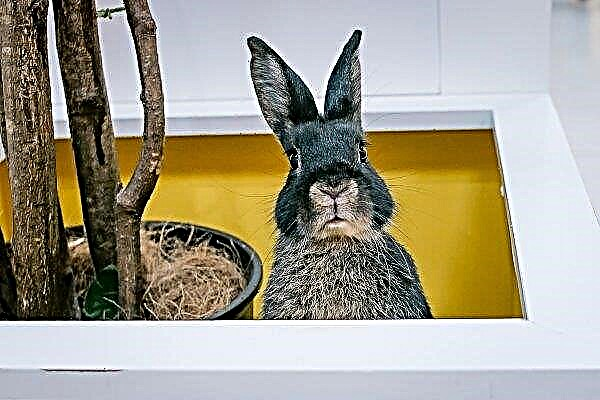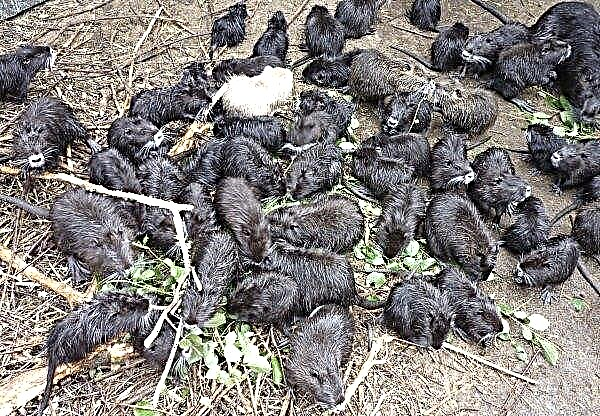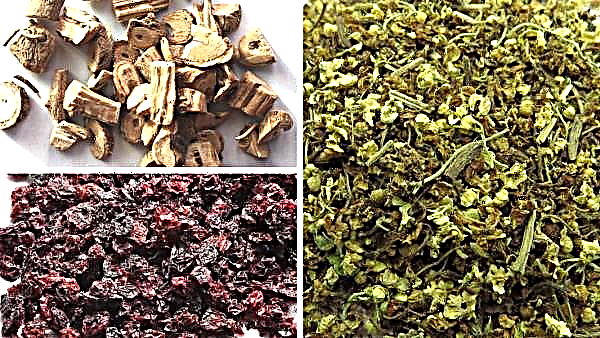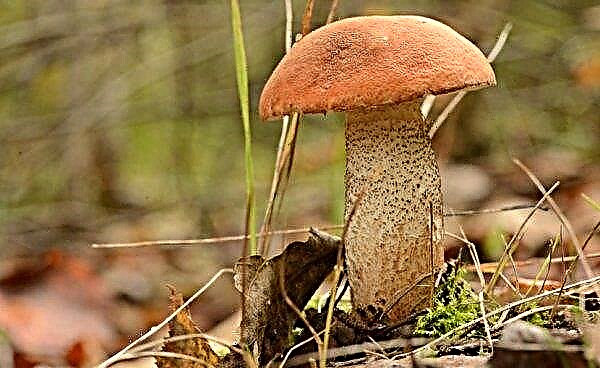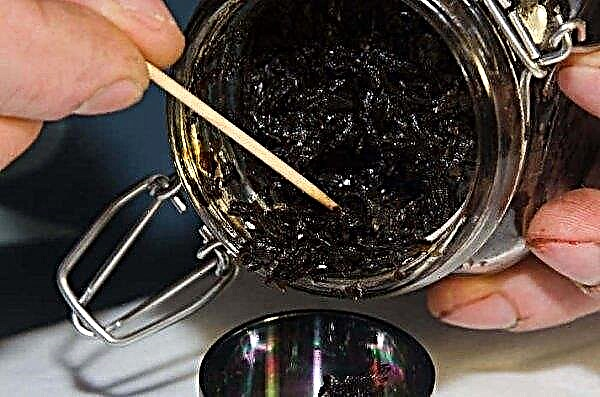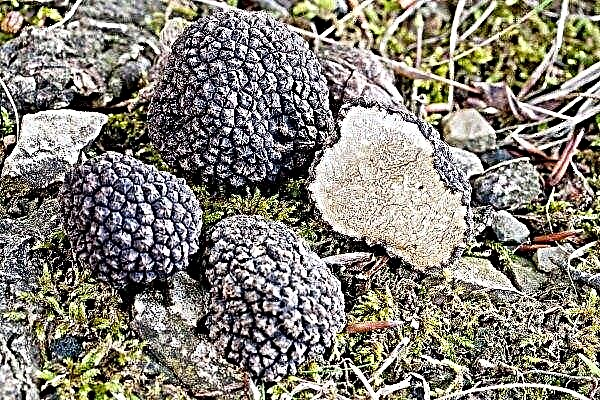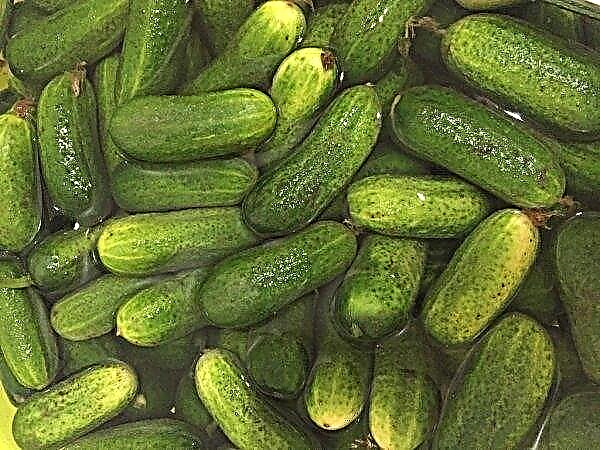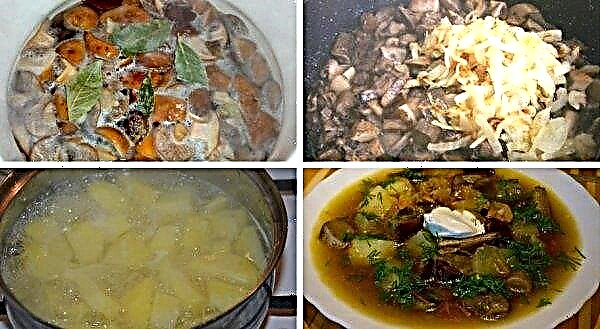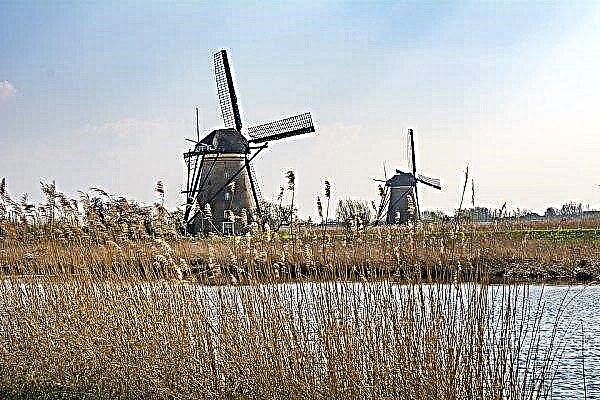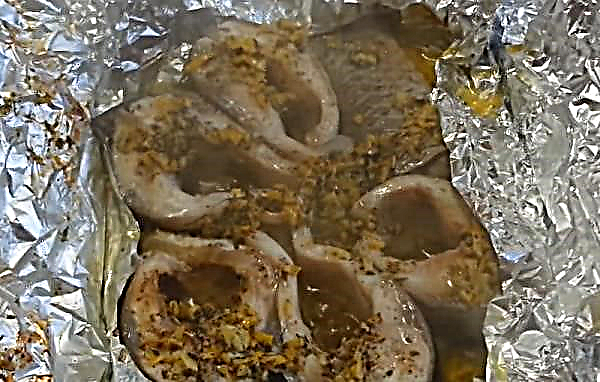There are many diseases of horses - from our article you will learn about some of them, as well as methods of treatment and prevention.
Infectious Diseases of Horses
This is the widest group of diseases. Most of them with untimely diagnosis cause severe complications and even eye diseases in horses.
Glanders
The causative agent of glanders most often enters the horse's body with food and water. Less commonly, infection spreads by airborne droplets. Signs of the disease are nodules followed by necrosis, purulent areas on the skin. Symptoms of glanders cannot be determined at the stage of the onset of the disease. Symptoms become apparent about a month after infection. They are different with different methods of the course of the disease. In this course, the horse dies after a month. Sap is a disease that cannot be cured. Sick animals are eliminated, after which their bodies are burned. For the acute method are characteristic:
For the acute method are characteristic:
- high body temperature;
- breathing is much faster;
- the animal is lethargic; it refuses to eat;
- ulcers with bloody discharge appear on the body.
For a chronic course are characteristic:
- dry cough;
- expansion of the lungs;
- fever.
Diseases can be avoided with the help of special preventive measures:
- You cannot import horses from places where this disease is common.
- If you find out that there are cases of glanders nearby, put your horses in quarantine for 2 months. Call a veterinarian - he must conduct a special diagnosis.
- Every year it is necessary to carry out malleinization of animals.
- The room and equipment that were in contact with a sick animal must be thoroughly disinfected.
Myt
The causes of the disease are as follows:
- poor nutrition;
- insufficient number of walks in the fresh air;
- poor ventilation in the stable.
Signs of washing:
- heat;
- purulent discharge from the mouth and nose;
- enlarged lymph nodes;
- general weakness;
- animal refusal of food;
- cough.
 For treatment, animals are placed in a warm, lighted room with good ventilation, while avoiding drafts. Particular attention should be paid to nutrition: horses are given soft hay, alfalfa, clover, root crops. Use antibiotics - "Bicillin" or others. The dosage, frequency of use and duration of the course of treatment is determined by the veterinarian. Camphor serum according to Kadykov (200-300 ml) and 40% solution of urotropin (100 ml) are also intravenously administered. A specific tool is an antivirus made from local strains of mytitis streptococcus. 50-100 ml of the drug is injected into the upper part of the neck. You can avoid the disease by observing the rules of keeping horses. Only purchased horses are quarantined.
For treatment, animals are placed in a warm, lighted room with good ventilation, while avoiding drafts. Particular attention should be paid to nutrition: horses are given soft hay, alfalfa, clover, root crops. Use antibiotics - "Bicillin" or others. The dosage, frequency of use and duration of the course of treatment is determined by the veterinarian. Camphor serum according to Kadykov (200-300 ml) and 40% solution of urotropin (100 ml) are also intravenously administered. A specific tool is an antivirus made from local strains of mytitis streptococcus. 50-100 ml of the drug is injected into the upper part of the neck. You can avoid the disease by observing the rules of keeping horses. Only purchased horses are quarantined.Horse flu
Among the causes of influenza are the following:
- insufficient feeding;
- stress
- water and feed with the virus;
- contact with sick animals.
Important! The main method of fighting the flu is to isolate sick individuals, as the infection spreads very quickly to other animals. The duration of quarantine is 1 month.
Signs of horse flu:
- high body temperature;
- dry cough;
- mucous discharge from the eyes and nose.
Sick animals need to be freed from stress and provide them with good rest. According to the recommendations of the veterinarian, they use drugs such as Analgin, Flunixin or Phenylbutazone, as well as antibiotics. For the prevention of influenza, horses cannot be brought in from areas where the spread of infection is recorded. Animals should be vaccinated from a month old every six months. In the stable, it is important to maintain good conditions.
Rhinopneumonia
The causes of rhinopneumonia are dirty litter, feed and water. In foals under the age of 9 months, this disease is accompanied by acute respiratory disease. Mares may have an abortion.
Signs of the disease:
- fever;
- conjunctivitis;
- lack of appetite;
- inflammation of the nasal mucosa;
- enlarged lymph nodes;
- sometimes there may be a cough.
Did you know? The virus dies quickly when exposed to high temperatures. Low temperatures have a preservative effect on it.
There are no special remedies for the treatment of rhinopneumonia. On the recommendation of a veterinarian, antibiotics can be used. As a disease prevention, vaccination is carried out. After the horse is ill, it develops immunity for 6 months. Then they use vaccines: they do it twice, with an interval of 4 months. Also, the prevention of rhinopneumonia will be compliance with all sanitary standards for keeping horses.
Infectious Anemia
The most common cause of the disease is insects, as well as the contact of horses with sick animals.
Signs of Infectious Anemia:
- fever;
- general weakness;
- disruption of the cardiovascular system.
There are no special preparations that kill the pathogen in the body: sick individuals are killed. The room in which they were kept is thoroughly disinfected. The main way to prevent infectious anemia is through frequent vet examinations of the horse. Only he can diagnose a latent form of the disease, in which there are no obvious signs. Such animals are very dangerous because they transmit the infection in contact with other pets.
Infectious Encephalomyelitis
The causes of the disease include bites of infected insects. With this disease, the nervous system is affected, the work of the intestines, bladder is disrupted, jaundice appears.
Symptoms of infectious encephalomyelitis (silent form):
- lethargy;
- heat;
- lack of appetite;
- slight yellowness.
With a violent form, the symptoms are different:
- the horse is rapidly changing state of depression and arousal;
- the temperature drops or remains normal;
- cramps appear;
- eyesight and skin sensitivity deteriorate.
Important! The recovered horses have a stable immunity to this disease.
The sick horse should be kept in a shaded room with plenty of bedding. At the beginning of the disease, you can give the animal specific serum in large quantities (more than a liter). A 10% solution of urotropin (100–250 ml) and glucose (400 ml) can be administered intravenously. Also use up to 200 ml of a 10% sodium chloride solution. Every 4-6 hours, 20 ml of camphor oil are subcutaneously injected. To increase the effectiveness of treatment, a sick horse is washed with intestines using glauber's salt or enemas. Measures for the prevention of infectious encephalomyelitis include vaccination. Animals must be kept in compliance with all sanitary standards.
Anthrax
Among the causes of the disease are contact with a sick animal and eating infected food. Also, the animal can become infected by airborne dust.
Signs of the disease have several stages of development:
- First, a small red-bluish spot forms on the body.
- Then it transforms into a red papule.
- After that, a vesicle with sulfur and then red liquid forms in its place.
- It bursts and an ulcer forms.
- After a while, a black scab forms.
- After about 3 weeks, he is rejected, and a scar forms in his place.

To treat anthrax, gamma globulin is used: it is administered under the skin or taken orally. According to the recommendations of the veterinarian, antibiotics (chloramphenicol, penicillin) can also be used. After the death of the horse, her body is burned. If the horse has recovered, it gains immunity to this infection. Prevention measures include observance of sanitary standards of horse maintenance, their regular vaccination. On farms where the disease arose, quarantine is imposed. The foci of the onset of an ulcer should be regularly checked for the presence of its pathogen.
Rabies
The cause of the disease is contact with the saliva of a sick animal through a bite or scratching of the skin. Rabies is incurable: a sick animal is killed, and its corpse is burned. The only preventative measure of the disease is vaccination.
Signs of the disease:
- change in animal behavior;
- the horse is very excited by light, noise and touch;
- dilated pupils;
- convulsive movements of the lips;
- foam comes out of the mouth;
- gnashing of teeth;
- the animal roars loudly and hoofs on the ground.

Tuberculosis
The cause of the disease is the ingestion of the virus inside with food or water.
Symptoms
- high body temperature;
- wheezing in the lungs;
- severe cough with mucous discharge;
- sudden weight loss;
- enlarged lymph nodes.
Tuberculosis is incurable: a sick animal is killed. For prevention, it is important to quarantine new animals and observe sanitary and hygienic rules for their keeping.
Pasteurellosis
The cause of infection may be the use of infected food or water. Often transmitted by airborne droplets.
Did you know? The causative agent of the disease is resistant to disinfectants. It dies at a temperature of +70 ... 90 ° C.
Symptoms of pasteurellosis correspond to the types of the course of the disease:
- In a super-acute course, the temperature of a horse rises sharply and diarrhea begins. There are no other signs, as the horse dies quickly.
- In acute course, the temperature also rises. The animal develops coughing, wheezing, lethargy, mucous discharge from the nose and eyes, and diarrhea.
- In a chronic course, horses lose weight very quickly. At the same time, their legs become swollen, anemia appears.
They treat diseases with antipasterellosis serum. Tetracycline antibiotics are also used. The dosage and duration of the course of treatment is determined by the veterinarian. For prevention, vaccines are used. Sick animals are quarantined. The room in which they were carefully disinfected.
Leptospirosis
The reason is the horse’s use of contaminated feed or water.
Symptoms of leptospirosis depend on the nature of its course:
- In acute - high fever, blood in the urine, yellowness of the skin, constipation or diarrhea, miscarriage in a pregnant mare.
- With subacute - the same mild symptoms are observed.
- In chronic - dramatic weight loss and productivity.

Listeriosis
The causes of listeriosis include:
- contact with a sick animal;
- eating infected food;
- contact with the pathogen on an open wound (scratch) or on the mucous membranes of the genital organs.
Symptoms are determined by the form of the disease:
- Nervous - lethargy, lack of appetite, fever, diarrhea, fear of light, profuse discharge of tears.
- Genital - constipation, mastitis, abortion of the fetus in mares.
- Atypical - pneumonia, fever.
 Treatment begins at the initial stage, otherwise it will not be effective. Use chlortetracycline (30 mg per 1 kg of body weight), tetracycline or oxytetracycline in the same dosage every 8 hours. For the purpose of prevention, vaccines are used, and they are also monitored to ensure that the horse feed is of good quality. Sick individuals are quarantined.
Treatment begins at the initial stage, otherwise it will not be effective. Use chlortetracycline (30 mg per 1 kg of body weight), tetracycline or oxytetracycline in the same dosage every 8 hours. For the purpose of prevention, vaccines are used, and they are also monitored to ensure that the horse feed is of good quality. Sick individuals are quarantined.Smallpox
The cause of the disease is low immunity, so young animals are most often sick. The source of smallpox is contaminated food, contact with a sick animal.
Important! Milk from sick mares is boiled before use to destroy the bacteria.
Symptoms
- stomatitis;
- purulent blisters on the skin;
- intense weight loss;
- lameness if blisters form on the joints.
Smallpox is treated with antibiotics, gamma globulin, ointments and iodine (for blistering), boric acid (for treating the oral cavity). Preventive measures include immunization of animals. Sick individuals are quarantined. Dead horses are burned.
Salmonellosis
The reason for the transmission of the disease is the use of infected hay for bedding, infected grooming tools, and the use of dirty food. Foals are most often sick.
Symptoms are different, depending on the type of disease:
- Acute - fever, lack of appetite, lethargy, diarrhea with blood after 3 days.
- Chronic - pneumonia, inflammation of the joints.

Horse contagious diseases
This group includes respiratory diseases, digestive pathologies and colic.
Respiratory disease
The reason for their appearance is the effect of low temperatures on the horse, its use of too cold water.
Symptoms
- runny nose;
- cough;
- fever.

Digestive pathology
These include:
- damage to the mouth, pharynx, esophagus;
- violation of salivation;
- pharyngitis;
- impaired swallowing, etc.

Colic
The cause of the onset of the disease is the horse’s malnutrition, its use of too cold water.
Signs of the disease:
- horse restlessness;
- hard breath.
They treat colic with an enema and also massage the sides of the animal. You can do a gastric lavage. The main preventive measure is proper nutrition.
Did you know? Colic can be caused by an accumulation of gas in the digestive tract, which can cause a bowel rupture.
Invasive disease
These are parasitic diseases of horses - then we will consider them in more detail.
Accidental illness
The cause of the disease is sexual contact with a sick animal, in which the vermiform parasite that causes the disease affects the body of a healthy horse.
Symptoms
- genital tumor;
- the appearance of ulcers on them;
- short-term increase in temperature;
- croup atrophy;
- weight loss.
 They treat the described disease with the help of Naganin, Azidine, Novarsenol, Fuadin. The dosage is determined by the veterinarian: he must regularly examine the animal to prevent the disease.
They treat the described disease with the help of Naganin, Azidine, Novarsenol, Fuadin. The dosage is determined by the veterinarian: he must regularly examine the animal to prevent the disease.Important! Before mating, the stallions are treated with Naganin.
Pyroplasmosis
The cause of the disease is the bites of ixodid ticks.
Symptoms
- high body temperature;
- lethargy;
- mucous membranes turn yellow;
- low activity level;
- dyspnea;
- painful urination;
- the urine is brown.
 Pyroplasmosis is treated with "Azidine", "Diamedinom". The dosage is prescribed by the veterinarian. For prevention, the horse is regularly treated with insecticides. During the period of increased tick activity, the animal is administered Azidine or Berenil every 10 days according to the recommendations of the veterinarian.
Pyroplasmosis is treated with "Azidine", "Diamedinom". The dosage is prescribed by the veterinarian. For prevention, the horse is regularly treated with insecticides. During the period of increased tick activity, the animal is administered Azidine or Berenil every 10 days according to the recommendations of the veterinarian.Worms
The reason for their appearance is the use of poor-quality feed.
Symptoms
- lethargy of a horse;
- the hair becomes coarse, ceases to shine;
- weight drops rapidly;
- lack of appetite;
- constipation or diarrhea;
- the presence of mucus in the feces.
Such drugs as Brovadazole, Brovalsen, Ivermectin, Alezan, etc. will help get rid of worms. An effective way to prevent worms is deworming, which is carried out under the supervision of a veterinarian.
Scabies
The cause of the disease is tick bites.
Symptoms
- hair loss
- scab formation;
- rash;
- itching
- peeling skin.

Diseases of the joints and hooves
Next, we consider diseases of the musculoskeletal system in horses.
Tendon stretch
The reason is too intense work without the use of protective bandages.
Symptoms
- deformation in the tendon;
- limp for no apparent reason.
 For treatment, you need to free the horse from any stress and leave it to rest in the stall. Ice is applied to the sore spot, after which it is treated with non-steroidal anti-inflammatory drugs and a tight bandage is applied. To prevent stretching before prolonged loading, apply protective bandages to the horse's limbs.
For treatment, you need to free the horse from any stress and leave it to rest in the stall. Ice is applied to the sore spot, after which it is treated with non-steroidal anti-inflammatory drugs and a tight bandage is applied. To prevent stretching before prolonged loading, apply protective bandages to the horse's limbs.Corolla serif
Reasons - untimely circumcision of the growing horn of the hoof wall, improper shoeing, movement on a horse along a slippery road or through snowdrifts.
Symptoms
- swelling of the corolla;
- the release of a small amount of blood;
- the appearance of pus;
- lameness.
 For treatment at an early stage of the disease, the hair near the wound is cut out, the horn wall of the hoof wall is cut and the wound is cleaned of dirt, then it is treated with iodine and bandaged. In the presence of complications, surgical intervention by a veterinarian is required.
For treatment at an early stage of the disease, the hair near the wound is cut out, the horn wall of the hoof wall is cut and the wound is cleaned of dirt, then it is treated with iodine and bandaged. In the presence of complications, surgical intervention by a veterinarian is required.Capelet
Reasons for a cap:
- untimely horse forging;
- improper trimming of hooves;
- the use of horseshoes that do not fit the horse in size;
- a pebble between the horseshoe and the hoof.
Important! To prevent the appearance of a cap, avoid the above errors.
Signs of injury:
- yellowish or red-blue horny sole;
- lameness;
- pus with severe damage.
Forging
The cause of the injury is improper clogging of the nail in the hoof when horseshoeing. Symptom of damage - lameness. For treatment, you need to remove the nail that caused the damage, treat the wound with iodine and cover it with cotton wool. The horse needs to be freed from stress until complete recovery.
Hoof crack
The reasons for its appearance:
- strong hoof blows with very fast movement on asphalt;
- serif corolla;
- using too thick nails for horseshoe.

Laminitis
One of the most serious leg diseases in horses is inflammation of the tissues that are between the horn shoe and the ungulate bone.
Causes:
- horse obesity;
- hard work;
- weight transfer on one leg, if the rest is sick.
- the horse takes specific poses;
- lameness;
- temperature increase in the hoof area;
- in severe cases, the horse loses his appetite, sweats and tends to lie down.
 For treatment, provide the animal with a thick litter so that it can lie comfortably. Use anti-inflammatory drugs - "Phenylbutazone", "Flunixin", etc. To expand the vessels, "Pentoxifylline", "Heparin" or "Isoxuprin" are used. Dosage is determined by the veterinarian. Ice baths are also effective. To prevent laminitis, monitor your horse’s diet to avoid obesity. Animals cannot work on hard ground.
For treatment, provide the animal with a thick litter so that it can lie comfortably. Use anti-inflammatory drugs - "Phenylbutazone", "Flunixin", etc. To expand the vessels, "Pentoxifylline", "Heparin" or "Isoxuprin" are used. Dosage is determined by the veterinarian. Ice baths are also effective. To prevent laminitis, monitor your horse’s diet to avoid obesity. Animals cannot work on hard ground.Now you know about the most common diseases of horses, their treatment and prevention. Take care of your animals using the knowledge gained from our article.

